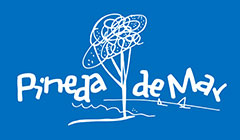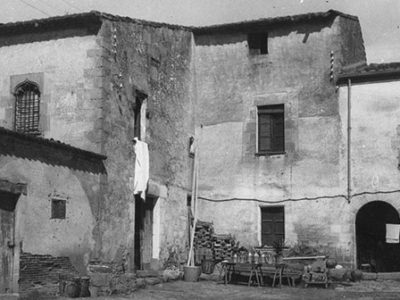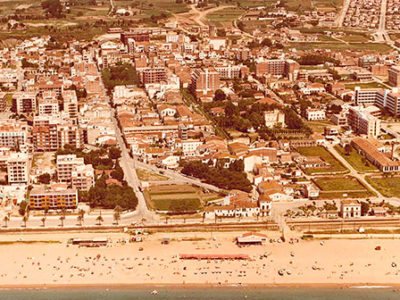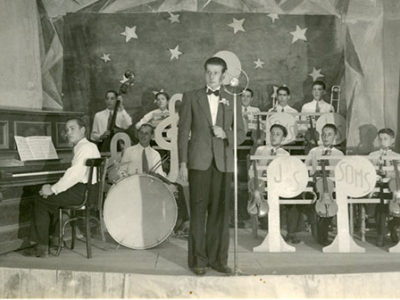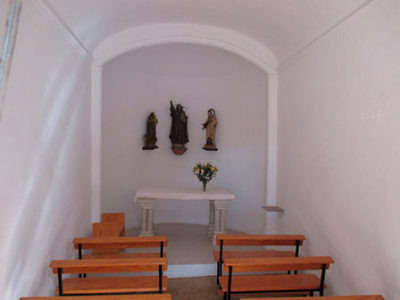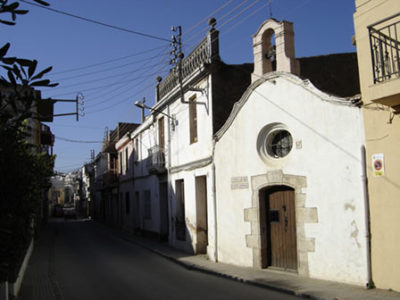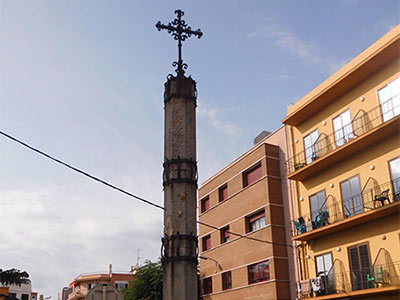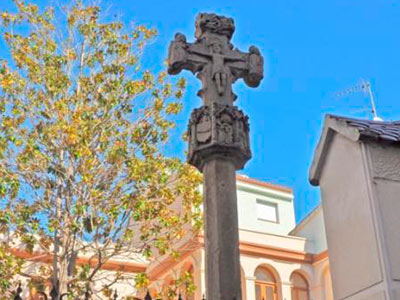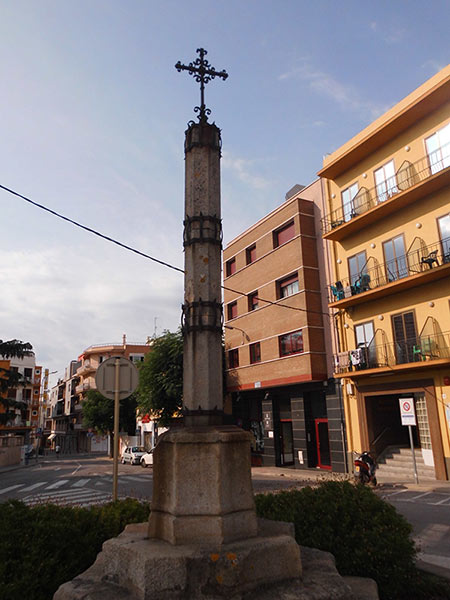HISTORY
From the fourth century BC, we can already speak of the first urban settlements in the current territory of Pineda de Mar. At that time, the current town was part of the area known in the Iberian era as Layetana. It consisted of a chain of fortified settlements that were normally located above the more strategic hills of the Sierra Litoral. Therefore, due to the archaeological ruins that remain, we can say that the first vestiges of the Iberian period known in the town are located in the present area of the hill of Montpalau.
From the year 218 BC and with the Roman military occupation of the Iberian Peninsula initiated by Ampurias, Iberian culture and settlements came into contact with the Roman Empire, a fact that caused the assimilation and disappearance of these settlements.
The Romans were replacing the Iberian tribal settlements by new agrarian exploitations. Thus, in Pineda we find a whole series of Roman remains of great historical importance: The Roman Town of Can Roig that was located around the Via Augusta; The Roman necropolis of Can Bel (I-II Century) that was excavated in 1996 and which was at the end of the Roman road, and finally the most well conserved architectural work of the municipality, the Roman Aqueduct of Can Cua.This aqueduct has been considered as the most well-preserved rural aqueduct in the northern part of Catalonia. This engineering work was carried out between the II-III century D.C on the western slope of the Guards hill. It had a length of 3.5 km, most of the aqueduct was underground and led the waters to the Roman villa of Can Roig. At present four and a half arches and one more arch separated from the first four remain.

Roman aqueduct of Can Cua
From the XI century onwards, and after the Arab occupation, Pineda became dependent on the castle of Montpalau, which was responsible for the military and fiscal administration of the territory of its jurisdiction, between Caldes de Estrac and Tordera. During the XII century, the castle of Montpalau changed to the feudal jurisdiction of the viscounty of Cabrera, which depended at the same time on the county of Girona.
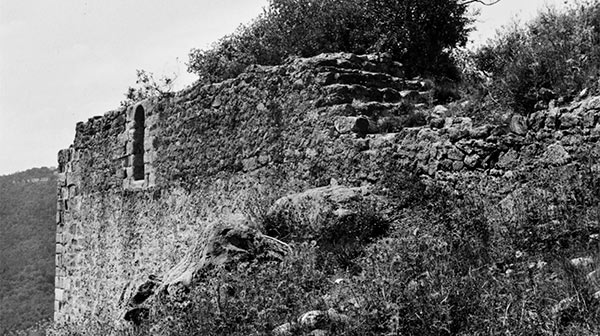
The Montpalau Castle in the year 1970
In spite of the existence of the castle and some isolated farms, the formation of the first urban area of the present Pineda de Mar did not arrive until the consecration of the church of Santa Maria, in 1079, and with the formation of the town of Sa Boada, first urban area around the church of Santa María de Pineda.
It is possible that this first settlement located in the high parts of the territory could have given rise to the name of our town, Pineda, mentioned for the first time in 947, with the toponym Pineta, that in Latin means high place..
The church of Santa Maria de Pineda was consecrated in 1079 by the bishop of Girona Berenguer Guifré, this being the first documented reference that is conserved. Thanks to this fact, around the temple the current core of Pineda began to form.
In 1246 it came to depend on the monastery of Sant Salvador of Breda and had as suffragan the parish of Sant Pere de Riu, very close to the population and that has been part of the municipality of Tordera since 1929.
During the first half of the sixteenth century, due to the attack of privateer Dragut in 1545, the old Romanesque church was replaced by a new fortified temple, which was ordered by Jean de Tours the same year of the looting, to offer a protected space to the inhabitants of Pineda. On the lintel of the main door of the church you can still find a written testimony about this fact.
During centuries XV and XVI several inner chapels were built as well as the sacristy that was commissioned by Miguel de La Gaspi.

The Church of Pineda in the year 1912
In the eighteenth century, a new body was added to the temple as well as the octagonal bell tower. The present baroque façade is also from that time.
The temple has suffered several lootings and fires, but the most recent was the fire in 1936 that left the church in very bad conditions, together with the total loss of the baroque wooden altarpiece of the high altar.
The temple and the sgraffito had to be restored in 1948 according to the design of the architect Isidre Puig i Boada.
From the inside of the temple, three elements are prominent, the dome of the chapel of the Santísimo, decorated by Josep Perpinyà, three rosettes with stained glass works by Domènec Fita and an image of the Piety carved by Frederic Marès.

Author: J. Poch
On a general level, the struggle against the Turks, and more broadly the Muslims, was constant during the sixteenth century, meeting the central aim of the Catholic Monarchy to expand Christianity and, at the same time, to stop the Turkish advance that put In danger both commercial relations with the Italian territories under his control as the set of European Christian kingdoms.
In Pineda de Mar, there was a pirate attack in 1545 carried out by the famous Dragut, who died in the siege of Malta of the year 1565. His name is a Catalanization of the Turkish word Turgud.
The attacks by the pirates were normally carried out in spring or summer, when the waters were calmer. They covered the Catalan coast looking for commercial ships, which were easy and often valuable prey. At other times, they were heading for the coast, usually looking for poorly defended points, and for a few hours or a few days they devoted themselves to the systematic investigation of loot, to the destruction of houses and to the imprisonment of people who were sold as slaves or were rescued by their families for large sums of money. The incursions were brief so that aid from surrounding areas would not arrive in time.

Turgut Reis’s Bust at the Naval Museum in Istanbul. Author: N. Expósito
It has been told that on the morning of Saturday, August 1, 1545, 11 stilts of Turks and Berbers personally captained by the famous privateer Dragut, placed their bow on the beach of Pineda where they disembarked. The scarce defenses and fortresses of the village were of no use, and in no time the corsairs seized the population, burning many houses, after looting, robbing and murdering many of its inhabitants, without making distinctions of sex nor age. When the church was closed, they burned its doors and plundered it. They took a silver tabernacle, the mantles of the altars, the garments and the priestly ornaments. They also destroyed the images of the Virgin and the Apostles of the Holy Sepulcher. They also attacked the rector’s house, located on a nearby hill and currently known as the Rectoria Vella (Old Rectory). They also invaded the fortified house called Torre de Manola and reached the farmhouse of Can Palau, located just over 2 km from the beach. Between the dead and the captives, 70 residents of Pineda disappeared, among them the notary of the town, Jaume Joan Coll who was released after the ransom was paid and the rest of the prisoners were taken to Algiers, present Algeria.

Inscription above the entrance to the Church of Pineda where the episode about the pirate attack is told. Author: N. Expósito.
During the Civil War (1936-1939), Pineda was within the republican side and, like many other villages, it was left badly damaged.
Many of the village’s youth came forward as volunteers or called by the conscription schemes.
As was customary on this side, industries and agricultural lands were collectivized to be made common use, causing evident riots amongst their owners.

Group of POUM volunteers from Pineda and the surrounding region on the Huesca front in the year 1936
During the war period, Pineda was bombed from the air, carried out by airplanes taking off from the bases of the national side in Mallorca, and also from the sea, by nationalist warships from The Canary isles.
The food shortage caused by the war was evident, and in the social ambit, the population was marked by the events of the war and the news from the front of the disappearance of the young people from Pineda.
Finally, on January 31, 1939, Franco’s troops entered and occupied Pineda towards the border with France. Thus, began a long postwar period turning into a tough dictatorship that lasted 40 years.
URBAN AND DEMOGRAPHIC EVOLUTION
The first settlements in Pineda began in the IV century BC, these were from Iberian tribes located on the hill of Montpalau. From 218 BC, these settlements were occupied by the Romans, also raising farms, this is also the case of the Roman villa in Can Roig.
In the middle of the XI century and with the construction of the castle of Montpalau, small houses of dispersed farmers began to emerge that would eventually evolve into great Masías entering centuries XV and XVI.

Farmhouse of Can Jalpí in the year 1930. Author: J. Danés Torras
Therefore, from the fifteenth century, thanks to the disappearance of great epidemics of the previous century, i.e. The Black Death, came an era of relative political stability and the revival of trade, there are many Masías with farms that still exist today.
It was not until 1079, with the consecration of the parish church of Pineda de Mar, that the surrounding area known as Pobla de Sa Boada was created, joined to the royal road (possible old Roman road of communication), and the present streets Major, Ciutadans and Sant Antoni.
This initial core, until the seventeenth century grew slowly outwards from the center of the town, Plaza Cataluña – Parish Church, by streets Major, Mar and Sant Antoni.
In relation to the evolution of the number of houses and/or inhabitants in Pineda, urban center and farmhouses, we know that in 1497 there were 79 inhabited houses with an approximate total of 350 inhabitants, in 1515 there were 78 inhabited houses with an approximate total also of 350 inhabitants and in 1553 this had increased to 119 houses that made an approximate total of inhabitants of 530.
From the second half of the XVIII century, Catalonia grew economically and demographically thanks to the improvement in farming techniques, the emergence of manufacturing industries and the free trade of Catalonia with America.
It is for these reasons that new streets begin to form as “the fishermen’s neighborhood”, in the lower part of the Mar street and the upper part of Tribala street, along with some isolated streets like Arnau de Vilanova, Coast and part of Church street, and existing streets are expanded, such as the upper part of Mar Street, Mayor street and Sant Antoni Street.
At the beginning of this century around 500 people lived in Pineda, however, coming to the end of the century and due to economic growth and social stability, it reached a population of 1,663 in 1787.
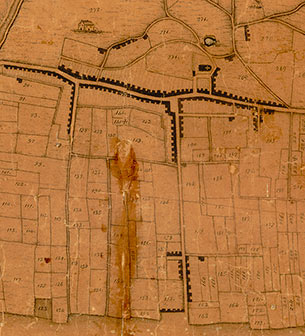
Layout map of the municipality in the year 1851. Municipal archive of Pineda de Mar
During the nineteenth century, the town developed very little urbanistically, focusing mainly on improving and reforming old constructions that already existed, largely promoted by families with a certain economic level, related to overseas trade and the local textile industry.
At the end of the eighteenth century and beginning of the nineteenth, with the disasters of the Great War and the French War, the population suffers a decrease reaching 1,212 inhabitants in 1813. From this time until the end of the nineteenth century, the population Increases to a total in 1897 of 1,805 inhabitants.
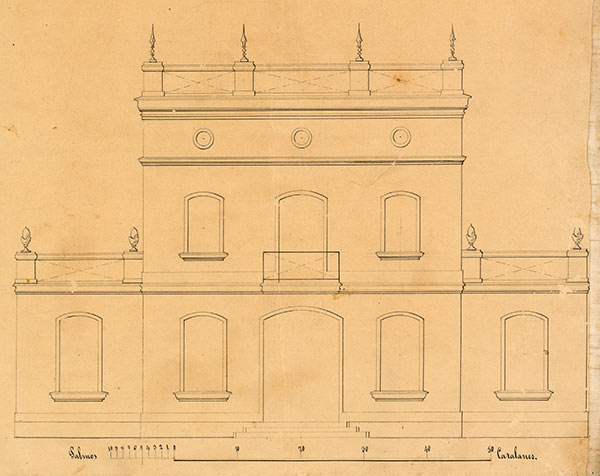
Plan of the façade of Cal Coronel in the year 1870. Municipal archive of Pineda de Mar.
The first wave of immigration of the twentieth century produced the necessary manpower for the construction of buildings in the Barcelona Universal Exposition of 1929, and textile and industrial growth in the area. These people mainly came from the province of Almeria and the rest of Catalonia.
With this growth, existing streets Dr. Bertomeu, Roger de Lluria, A. Clave, Progrés, Colom, Jaume Balmes and Garbí were developed.
It was also the beginning of Poblenou (New town) with the existing streets Ponent and Once de Septiembre.

Houses in Ponent street in the year 1965. Author: J. Pujadas.
This urban growth was different to others because it did not expand existing streets, but urbanized areas which until now had been farms, between the old town and the sea.
These first four decades of the twentieth century meant a considerable increase demographically, going from 1,809 inhabitants in 1900 to 3004 inhabitants in 1940.
The beginnings of tourism from the 1960s and the need for labour for the construction of hotels and homes for new residents and hotel workers, mainly from Andalusia, meant that the town had a new urban growth.
This time occupying those fields that had not been developed between the N-II and the beach.
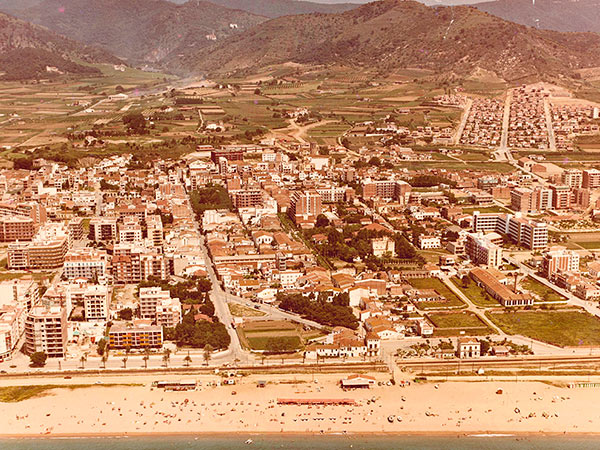
Aerial photo of Pineda de Mar in the year 1974
Regarding the population, it was stable until 1960 with approximately 3,000 people that was reached in 1940. Since then, the population grew exponentially. So, in 1970 consisted of 7776 and in 1980, 11 739 inhabitants.
From then until 2006, the population stopped increasing, reaching close to 26,000 inhabitants, a figure that now, in 2017, still maintains.
TRADES
Agriculture is the sector that has always occupied most of the population of Pineda. Croplands stretched from the hills of Montpalau and the Guardia to the beach, passing through the plain. These plains were good and fertile for the cultivation of olive trees, wheat and rain-fed vineyards, and irrigated orchards where different vegetables were grown.
Around the town, the land was divided into many small farms that belonged to different owners, whereas in the areas outside the town there were farmhouses with their extensive farmland.
In 1910 the Agricultural Union was created in Pineda to be able to organize and respond to the growing export trade of vegetables to Europe, where the vegetables with the most output were the potatoes known as Mataro Potatoes and the trocadero lettuce.

Grape harvest in the year 1956. Author: J.Cadena
At present, there are still farmers, but not as it had been until the 1960s, when tourism arrived, as this work was more stable and the newly built hotels occupied land areas that had previously been agricultural, making the sector irrecoverable.
Despite Pineda being a seaside town, the activity of fishing did not take off until the middle of the XVIII Century when the Arrabal, “The Fisherman’s neighbourhood”, was developed. Up until that time, the areas closest to the sea were dangerous due to pirate attacks and the trade of fishermen was only practiced during the months of good weather. It was an activity that occupied a small part of the population because many fishermen combined their trade with the cultivation of vegetables for self-consumption.
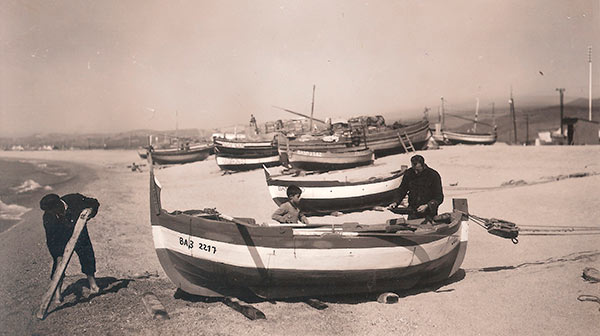
Fishermen on Pineda beach in the year 1955
The time of maximum fishing activity was during the decade of 1940 with approximately 200 fishermen in a total population of 3004 inhabitants.
With the arrival of the 1960s, many fishermen left fishing or combined this work with industry and tourism. Currently, professional fishermen that remain in the town no longer have their boats on our beach. Due to safety and performance, they keep them in the nearby ports of Arenys de Mar and Blanes.
A factor of innovation and revolution was the arrival of industry as the new economic engine of Pineda to the detriment of agriculture. Year after year, and from the beginning of the nineteenth century, industrial entrepreneurs joined, and in 1935, 21 could already be counted.

Textile industry in the year 1968.
During the postwar years, beginning in 1939, the lack of raw materials and energy restrictions made the activity boom loosen. Since the 1970s, the sector has undergone a new growth that extends to the beginning of the 21st century.
One of the most important companies was Industrial Aragonés, S.A. which began its activity in 1958, but closed its doors in 2002, having reached a total of 600 workers.
The beginnings of this activity are said to coincide with the arrival of the railroad in 1859. This allowed wealthy families from Barcelona to come to Pineda to spend the summer holidays, to rest and swim in the sea, which was considered healthy. Many of these families had their second residences built in the town, which are buildings of great beauty. Some of them still remain in Mar street to this day.

Summer holidaymakers on Pineda beach in the year 1925.
The Spanish Civil War (1936-1939), the immediate postwar period and the international context of the Second World War represent a turning point for the expansion of the previous model of tourism.
The second stage of this sector started from the second half of the twentieth century. Having overcome the more extreme social and economic conditions of the first Francoism and with the emergence of European paid vacations that facilitate the arrival of Europeans to the Catalan coast, the first hotels appear in Pineda de Mar, imitating the model of the neighboring town Calella.
Until 1958, Pineda had only one hotel establishment, the Hotel Montpalau, which opened for business in June 1946.
At first, small establishments would take advantage of preexisting buildings. But afterwards they thought about building new establishments that could accommodate a significant number of visitors. The unquestionable milestone would be the construction of the Taurus Park Hotel, in the summer of 1963, with 343 rooms and more than 600 seats, becoming the largest state-wide.

Taurus Park Hotel in the year 1965. Author: J. Pujadas.
The alpargata (a canvas shoe with a rope sole) was a good form of footwear for rural areas and much cheaper than shoes. So, the alpargata industry, until the 1920s, ranked third in terms of the number of workers, behind farming and fishing. Later, this activity was lost due to the change of use towards other types of footwear.

One of the quintessential feminine activities was tatting, which helped with the economic income of the family. In the eighteenth century, the production of lace experienced significant growth thanks to trades with America and Europe. Today they remain as a reminder of a traditional and artisan activity.

Lacemakers in Justice street in Pineda in the year 1913.
CHARACTERS
Joan Coromines y Vigneaux (Barcelona, 1905-Pineda de Mar, 1997) was one of the most prestigious Catalan philologists to date.
He was son of the politician Pere Coromines y Montanya and pedagogue Celestina Vigneaux y Cibils. From an early age, he was interested in linguistics. Therefore, he studied at the Faculty of Philosophy and Letters of the University of Barcelona, complementing his studies in several European universities.
He was exiled after the Civil War and was a professor for a short period at the University of Cuyo, located at the foot of the Argentinian Andes. Later he became professor of the exclusive University of Chicago, where he remained for more than twenty years, until his retirement in 1967. It was then that he returned to Catalonia and settled in Pineda de Mar.
The work that made Joan Coromines the reference philologist of Catalonia was, on the one hand, the ten volumes of the etymological and complementary Dictionary of the Catalan language (1980-2001), which gave a global response to the etymological filiation of our language, and, on the other hand, the eight volumes of Onomasticon Cataloniae (1989-1997), where in this case he gave answer in the origins of the place names of all the Catalan Countries.

Joan Coromines in the year 1958. Author: Ramón Batlles.
Manuel Serra y Moret (Vic, 1884 – Perpignan, 1963) was one of the most important intellectual and political figures in 20th century Catalonia. Ideologist of the socialism with deep Catalan roots, co-founded the first Catalan socialist party in 1923.
At the end of the Spanish Civil War in 1939, he had to embark on the road to exile, but in that “desert”, as he himself defined it, appeared one of the most important figures of the opposition to the Franco dictatorship. Catalan Generalitat Government adviser in exile, minister of the republican government and president of the Socialist Movement of Catalonia, he developed an intense activity in the political field.
Thanks to the marriage to the folklorist from Pineda Sara Llorens in 1908, he came in contact with the towns people and was elected mayor in two stages, from 1914 to 1923 and from 1930 to 1934.
During these stages he promoted the administrative renewal of the City Council and the improvement of municipal services such as the construction of the new Town Hall in 1917, and the construction of the Public Library and the Municipal Cemetery in 1922.
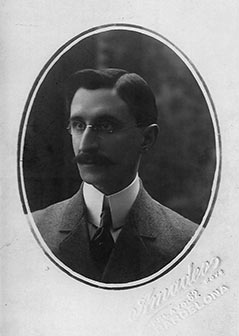
Manuel Serra Moret in the year 1915. Author: Amedeo.
Sara Llorens Carreras (Lobos, Argentina, 1881 – Perpignan, 1954). She was a folklorist of great relevance to Catalonia, daughter of a family from Pineda, emigrants in Argentina, and married to politician Manuel Serra y Moret. Already established in Pineda, she studied magisterium and extended studies at the School of Teachers and Other Careers for Women in Barcelona.
She promoted local cultural activities such as the construction of the Public Library inaugurated in 1922. Due to the Spanish Civil War, in 1939 she was first exiled in Argentina and finally in Perpignan where she died in 1954.
Her most important work is El Cançoner de Pineda (1931), a songbook where she collected traditional songs sang in different situations of work and daily life in Pineda de Mar.

Sara Llorens Carreras in the year 1915. Author: J. B.
Vicenç Riera Llorca (Barcelona, 1903 – Pineda de Mar, 1991). Writer and journalist. Due to the Spanish Civil War in 1939, he was exiled in France, the Dominican Republic and Mexico. In 1969 he established himself in Pineda de Mar where he created most of his novels. Amongst his most important work we can find, Los tres salen por el Ozama (1946) and Haz memoria, Belio (1971).

Vicenç Riera Llorca. Author: J. Pujadas.
Joaquim Soms Janer (Pineda de Mar, 1914 – 2012) musician and composer of sardanas. His most well-known composition was the sardana Catalans a l’Alcàrria, composed during the Spanish Civil War, where it became an anthem for Republican soldiers of the division of Guadalajara. Between 1945 and 1966 he toured theaters and concert halls throughout Spain with the musical ensemble he had founded with his disciples named Soms y sus muchachos.

Joaquim Soms in the year 1946.
Download information from
ORIGINS IN PDF
THE HERMITAGES
The chapels erected in honour of Saint Anthony, Our Lady of Grace, Saint James and Saint Raphael, rather than simple places of worship, are a reference very beloved by the townspeople of Pineda. This is shown by the fact that villagers have helped restore these places and replace the bells that culminate the rooves of these small buildings, maintaining them at a level of adequate conservation despite how long ago they were built and the vandalism to which they have been subjected during the years.
One of the initiatives that has contributed especially to the exposure of these typical places to the regular holidaymakers and newcomers of Pineda de Mar, has been the route called “Night of the 4 hermitages”, which for ten years now has been organized during the summer and which has a considerable participation of fellow citizens.
This year, to commemorate the first decade of the initiative, a booklet has been published that brings together brief notes about the life and legends that surround these chapels and is accompanied by several illustrations.
From the city council of Pineda de Mar, we applaud this magnificent initiative by the Centre for Archaeology Studies in the Alt Maresme with the hope that the activity can be celebrated for many years to come with the joy and harmony that characterizes it.
The parochial church of Santa Maria is an emblematic monument of Pineda de Mar. Its imposing bell tower excels in the urban landscape and it is clearly visible from many places. And with the lights of the Christmas holidays, it stands out even more.
But the parochial church does not shade other smaller but very significant places of worship, scattered around different parts of the town. Within the limits of the municipality of Pineda de Mar we find three hermitages: one dedicated to an archangel: San Rafael; and two in honour of two popular saints: Sant Antoni and Sant Jaume. And in the municipality of Santa Susanna there is a chapel dedicated to Mary, which belongs to the town council of Pineda and which is very esteemed by the townspeople: The Virgin de Gracia.
All these hermitages sink their roots into a more or less distant past and are the expression of the faith of many people who helped build and maintain them, and yet they feel so close to us. They retain their artistic interest and, above all, they continue to be centres of worship. Therefore, they are, today, an expression of the Christian faith of many people, in continuity with the beliefs and the religious practice of so many people for so many centuries.
May the hermitages and faith remain together for many years.
We never thought, ten years ago, that our project would take off. The origins are very humble. What joined us together was our love for nature and our heritage and we agreed that the best way to preserve it was for people to know about it and to make it their own. We sought to unite historical knowledge with the passion to enjoy our environment. We have everything we needed close by, a castle, medieval farmhouses, Iberian remains, a Roman aqueduct and several hermitages scattered throughout our town.
From the beginning, our group started with great enthusiasm. We were few but we got on well, with little resources but with a great desire to move forward. We were immediately joined by a small group of unconditional adventurers who always asked for more. Hence the various activities that we have been doing over these years like “A walk by the Riera” and “A present past.”
Several entities and schools have requested our collaboration to prepare a pedagogical dossier for their associates and the students of the educational centres to enjoy. We must have done something well, perhaps the small explanations, the hot chocolate under the stars or the good company that has led us to grow up to three hundred people in recent years. This year we have put signs on the path and published this booklet so that anyone who wants to do this route can do it any day.
We hope you continue enjoying the “Night of the 4 hermitages” with the same effort that we have put in all these years. Without you, friends, this project would not have come to be a living reality. Thanks for making it possible.
We find hermitages scattered throughout the land, in better or worse state, in places far away, wild, others in the village. The hermitages are a sacred place to feel close to God. The primitive towns laid down a divinity where they saw a mystery which was manifested not in a single God, but in all the natural phenomena that man could not master. The deities were related to the mountains, the forests, the water, the earth, the archaeological remains …
The hermitages have been erected by people of simple class. Their purpose was to thank the existence of the world, from life to death. They began as health centres, of spiritual energy, but in the calamities, we see the townspeople’s fears portrayed in them: the lightning, the rough sea, the wolf, the rabies … Among them we can find those dedicated to the protection of natural inclemency, body health and also social crises such as droughts, storms, diseases, hunger, wars, plagues, etc. The devout groups were basically sailors, peasants and fishermen. They were also a useful neutral space to solve problems between towns, very frequent in the Middle Ages.
The 11th and 16th centuries were the most conducive to the foundation of hermitages. First, because of the great religiosity that existed. Second, for the economic as well as social push. Throughout the 19th century rationalism prevailed, society trusted more in science than in saints to solve problems. During the Civil War there were many damaged hermitages, which later the faithful went on to restore little by little. Through time, the town has kept alive the devotion to the saints that was expected and it continues to honour them, even thought it is only once a year. In general, the leisure aspect is mixed with the religious aspect.
Nowadays, natural disasters and diseases are no longer seen as divine punishment. Now everything has an explanation given to us by wise people, books and science. Perhaps the day they do not offer us a timely solution we will turn our eyes to heaven again and to the hermitages.
Pineda de Mar is located in an enviable setting, between the coast of the Mediterranean Sea and the buttresses of the Montnegre mountain range. Of clear Mediterranean climate, the marine breezes that are mirrored in the mountains temper the hot summers and they warm up the light winters obtaining a mild climate throughout the year. The substantial difference in water flow between the summer and the other seasons has sculpted the landscape with a multitude of streams that penetrate our territory, more or less dry for a good part of the year and overflowing after a summer storm. The main one is the Pineda stream, which inevitably digs our granite mountains to turn them into the gritty sand that fills our great beaches.
Human activity has moulded the landscape over the centuries. From a thick wood on steep slopes to vineyards and olive groves arranged in terraces. From the alluvial plain to fields and buildings. This alteration has allowed the creation of a more diverse mosaic and thus attract an infinity of animal and plant species that have found an ideal environment to be able to progress.
The Stone Pine (pinus pinea), a predominant tree in our environment, that when fully grown takes the characteristic shape of the parasol, causing a lack of light and preventing the growth of the underbrush, is the king of our forests. It is accompanied by the oak queen (Quercus ilex) that is not in any way inferior. Of leafy top and pointed leaves, it replaces the pine in the new lands that it colonizes, without forgetting its wide court of riverside trees, that like a bright green snake, zigzagging, marking the route of our streams, like the Alder (alnus glutinosa), White Poplar (Populus alba), Hazel (Corylus hazel), Black Poplar (Populus nigra), Aspen (Populus tremula), or the retrieved Chaste tree (Vitex agnus-castus).
Under these majestic trees, there is a whole variety of undergrowth, which has always been used for its medicinal properties such as Thyme (Thymus vulgaris) and Rosemary (Rosmarinus officianalis), aromatics such as Lavender (Lavandula stoechas) and Lemon balm (Melissa officinalis), showy and fragrant like the Spanish broom (Spartium junceum) and the Cistus (Citus albidus).
Exquisite culinary delicacies such as the fungi, Bloody Milkcap (Lactarius sanguifluus) and Caeser’s Mushroom (Amanita caesarea), and The Strawberry Tree (Arbutus unedo).
And among this infinity of plants, these subjects live there. Nobles such as Roe Deer (Capreolus sp.), warriors such as the Boar (Sus scrofa), the cunning and clever Fox (Vulpes vules), the slippery Stone Marten (Martes foina), the jongleur squirrels (Sciurus vulgaris) and the cute nocturnal hedgehog (Erinaceus europaeus).
The orchestra of troubadours who captivate our ears with their tunes deserves an honourable mention. They are fixed inhabitants just like the Robin Red-breast (Erithacus rubecula), the Blue Tit (Parus caeruleus), and without forgetting the crowd of passers-by that take advantage of this wonder to recover from the long migratory journey such as the Swallow (Hirundo rustic) and the ever-eye-catching Bee-eater (Merops apiaster).
The hermitage dedicated to Sant Antoni, patron of the builders, is located in the urban nucleus, on the no. 57 in the street of the same name. We have no reference to the date of its origin, although some authors place it in the 17th century, a moment of urban growth and economic development of the city.
During the nineteenth century, travellers passing through Pineda took refuge in the hermitage, when the town closed its doors. Sick travellers also stayed, that the same townspeople watched over as they healed.

During the nineteenth century, travellers passing through Pineda took refuge in the hermitage, when the town closed its doors. Sick travellers also stayed, that the same townspeople watched over as they healed.
During the Civil War the hermitage was damaged, but nowadays it is very well preserved. The estate belongs to the Comas family, former owners of the Can Comas farmhouse, the town building of Culture in Plaça de Catalunya (Catalunya square).
A rectangular building, with an area of 40 m2, it has a stone stack for the holy water. On the 13th of June, the day of Saint Anthony, mass is held there.
Sara Llorens de Serra collects in the songbook of Pineda (1931) some descriptive rolls of the location of the hermitage (p.281):
“Goodbye, town of Pineda,
Goodbye, great town, goodbye!
To one side there is Sant Antoni
and to the other Sant Andreu ”
Later on, she also transcribed the “Joys of the miraculous Sant Antoni de Padua that are sang in the parish church of Santa Maria de la Villa de Pineda” (p.307 and 308).
Recently, a stained-glass window was put in the Oeil-de-boeuf window of the hermitage, work by the artist Joan Vila Grau, a collaborator of the Sagrada Familia temple, and the image of the saint was restored in the School in the town of Olot.

This hermitage is at the top of a small hill that is split between the towns of Pineda de Mar and Santa Susanna. This hill, located to the north of the town, is visible from the main road, National II. From the hermitage you will enjoy a magnificent panoramic view, which makes it an excellent viewpoint of the town of Pineda and the slopes that stretch from Calella to Blanes. The chapel was built in 1715, it seems that on the initiative of a group of sailors who put it under the invocation of Our Lady of Grace.

During the Civil War (1936), the hermitage was burned down. In 1940 the restoration began and the walls were decorated with a fresco of great proportions, the work of an artist from Pineda, Josep Fabré. The work was finished in 1946, with the blessing of the new image of the Virgin. As of that date, a gathering was held in the chapel, every Easter Monday, which was held until the end of the sixties. On the other hand, during the month of March it was used to hold a “Romería”, in which the assistants would come back with bunches of thyme. In the year 1958 the City Council of Pineda acquired the chapel, located in the town of Santa Susanna, which was owned by the Caralt family of Malgrat. In 1973 it was looted and burned down by a group of vandals. The following year, the group Escolta i Guia Montpalau de Pineda, cleaned it and conditioned the interior.
In August 1981, on the initiative of Father Ignasi Forcano, rector of Pineda, the Girona artist, Josep Perpinyà i Citoler, professor of the Sant Jordi School, helped by a group of students, began to renew the interior of the chapel with a coating of allegorical mosaics from the sea and the mountains, which covers all the walls and the header of the hermitage. To carry out this spectacular mural, Perpignan used pieces of tiling, recovered from the constructions waste material. A bronze sculpture of the Virgin, the work of the same artist, presides over the enclosure. On April 14, 1985, Ms. Joaquima Castany donated a bell that crowned the work.
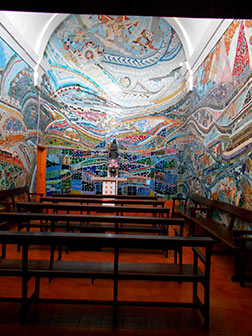
This Hermitage is located in the hamlet of Can Martorell (at 81 meters above sea level), at the foot of the castle of Montpalau (first mention 1089), in the middle of nature and surrounded by farmhouses of interest: Can Cànoves, mas Castellar de Portellar (1094) and Can Martorell.
It is small and rectangular and of recent construction. Above the entrance door, carved in a stone, there is a date, 1908.
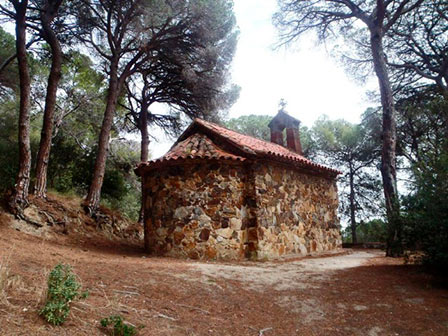
The hermitage has been restored several times by the neighbours of Pineda de Mar. The location of the municipal garbage dump in this hamlet (1978) contributed to its abandoned condition. Later the closure of the landfill and the sealing of the area (1994-1995) allowed the recovery of the site.
The Pa, Vi i Moltó Group of Calella donated an image of the Archangel; and the rector of Pineda de Mar, Father Josep Gispert, blessed the sculpture made in Olot by the artist Jaume Pla. To complete the ornamentation, in October 1995 they offered a lamp. Subsequently, in 1996, they delivered two more bronze lamps to the hermitage. The same group made the offering of the bell, which weighed 40 kilos, from the Barberí foundry, which was sponsored by Ms. Rosa Maria Lleonart and blessed by Father Gispert, on August 28, 1997.
Finally, they offered the historic raised stone panel, with the biblical majolica of St. Raphael and St. Tobies, in the miraculous passage of the fish. On October 18, 1998, the Pineda artist, Josep Planas, performed the restoration of the border.
In 2012 a gang of vandals damaged the interior of the chapel and stole the bell. At the moment the city council of Pineda de Mar, with the support of the Cau and the Centre of Studies of Archeology of Alt Maresme, is promoting the rehabilitation.

To the west of the town, close to the tower and the fountain of Sant Jaume, there is a hermitage dedicated to this saint. It is privately owned, and is located at the foot of the estate of Mas Castellar de Portellar (tower of Sant Jaume), and in a place of great natural beauty where we find the fountain of Sant Jaume, the mill of Castellar, Ca l’oliver del Turó and Can Cassola (1109).

It is a small enclosure with a rectangular shape, with a stone lintel door with a skylight above it. At the top, a steeple with the corresponding bell and the cross. It was built in 1885 by the lords Castellar, owners of the land.
Since 1926, the assembly of Sant Jaume has been organized there. Initially (1926-1928), the Sardana Youth of Calella took care of it and, since 1929, the Sardana Youth of Pineda, which held eight editions, the last of which took place on May 24, 1936.

At the beginning of the Civil War, the hermitage was looted and burned down.
In 1942 the owner of the hermitage, Mateu Vila Fornaguera, began the rehabilitation that ended on May 2, 1954 with the installation of a bell. To celebrate the event, a mass was held and a Sardana was performed.
In 1957 the celebration of the assembly was restarted, with eight editions that continued until 1964. Fifteen years later, in 1979, the momentum came again, the enthusiasm and effort of a group of people, on this occasion from Barri de les Creus, allowed the assembly to continue in the year 2003, when the twenty-fifth edition was commemorated with a special celebration in which three Sardana ensembles participated. Fortunately, despite the economic difficulties we have today, the gathering of Sant Jaume continues year after year faithful to its appointment.

A les quatre ermites descrites, hem d’afegir dins del terme municipal de Pineda de Mar la de Sant Andreu, situada en la confluència dels termes de Pineda de Mar, Sant Cebrià de Vallalta i Hortsavinyà (actualment terme de Tordera), tot i que no s’ha inclòs en la ruta.
La capella és de planta rectangular, d’una nau amb possible absis, posterior a la construcció inicial. És esmentada en l’acta de consagració de l’Església de Pineda (1076), on s’indica els límits jurisdiccionals de la parròquia. Aquest fet, dóna indicis del caràcter romànic de la capella. S’afirma que fou restaurada entre els segles XVII i XVIII. Avui en dia només queden dempeus les parets laterals, sense sostre. La construcció afegida en un lateral era l’habitatge d’una eremita.
Sara Llorens l’esmenta en El cançoner de Pineda (1931) i reprodueix els “Goigs que es canten en la capella del gloriós apòstol i màrtir Sant Andreu situada en el veïnat de l’Arbosseda de la Parròquia de Santa Maria de Pineda”, editats l’any 1852 (p.312).
WAYSIDE CROSSES
Location: Since the nineteenth century we have evidence that the wayside cross is located in the yard of a privately-owned house. The building is on Carrer Major, number 62, popularly known as Can Quintana, named after the last owners of the property.
Dating: 14th / 15th Century – gothic style
Material: Stone
Measurements:
Base: 0.25 meters high; 0.44 meters wide
Shaft: 2.45 meters high; 0.20 meters wide (diameter)
Cross (arms): 0.85 meters high; 0.68 meters wide
Conservation state:
Good; but the shaft that holds the cross presents a pathology of deep and marked cracks.
Description of the cross:
A stone base made up of a single 0.25-meter octagonal step that supports the shaft, a stone pillar also with an octagonal section. A metallic framework holds the shaft due to cracks. The arm of the cross that points at noon is a lying Christ with arms outstretched; St. John, on the right, and Dolorosa, on the left, stand by the Crucified. The other arm, facing the north, has the Virgin with the child in her arms and at the end of the arms of the cross, on both sides, two angels. At the base of the cross, between the shaft and the cross itself, there are 8 chapels of 0.34 m in height and 0.40 m in width (diameter) with images of saints (Saint Peter, Saint Sebastian, Saint Eulalie).
Date of photographs and origin:
April 9, 2003. Image Archive of Pineda de Mar. Source: Pineda de Mar Town Hall.
Author of the file:
Francesc Roldán Sánchez / Municipal Archive of Pineda de Mar
Location: In the middle of street Mossèn Antoni Doltra and at the foot of the National-II, between the parish church of Santa Maria and the west corner of the street.
Dating: Base and a part of the original wood are from the 15th – 16th century, the rest of the shaft and the cross are from 1948/49, according to a design by the architect Isidre Puig i Boada. The cross was blessed on August 29, 1949.
Material: Granite stone and wrought iron
Measurements:
Base: The stairs length: 0.70 m.
Original base: 0.73 m.
Shaft: 2.56 m.
Cross: height 0.93 m, arm: 0.53 m. Thickness of the iron tube: 2.5 cm.
Conservation state: Good
Description of the cross:
A stone base on three-star shaped steps, with 8 edges, supports the eight-section stone shaft made up of three bodies of different sizes: a first body 1 meter; a second body of 0.74 m, and a third of 0.82 m, with a diameter of 30 cm. The different parts of the shaft are joined by a 40-mm high,7-mm wide wrought iron ring. It Is crowned by a simple cross of wrought iron without any accessories.
Date of photographs and origin:
April 11, 2003. Image Archive of Pineda de Mar.
Source:
City council of Pineda de Mar
Author file:
Francesc Roldán i Sánchez / Municipal Archive of Pineda de Mar
Note: This modern cross replaces an ancient wayside cross that was damaged during the 1936-1939 war. Image attached. The style of this cross was flamboyant Gothic. It was located in a corner of the parochial church, approximately in front of the current c. Eglesia, number 106. Some elements of this cross (the base and part of the shaft) were used to construct the new 1949 wayside cross.
